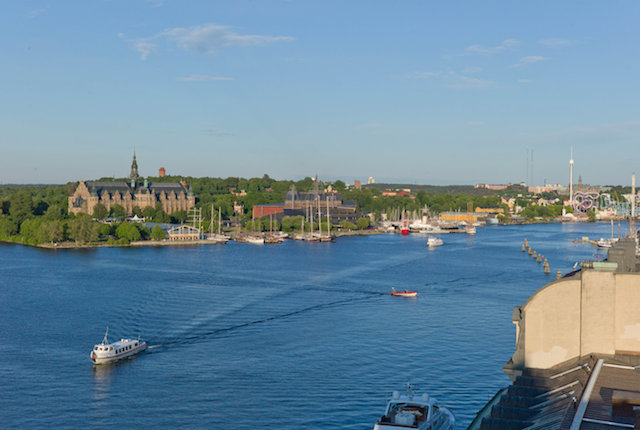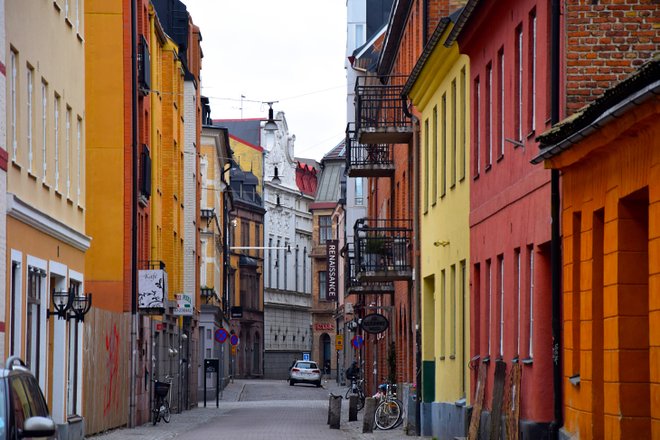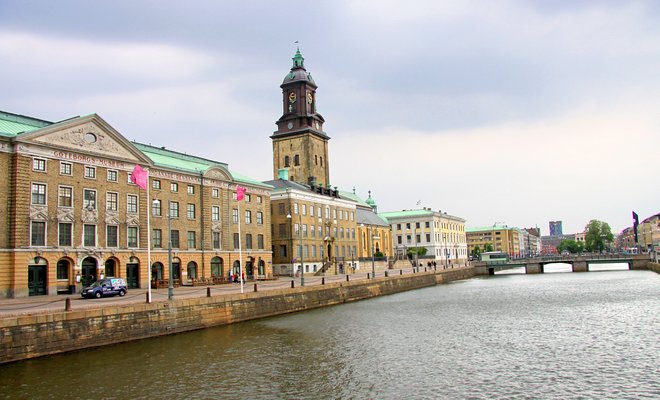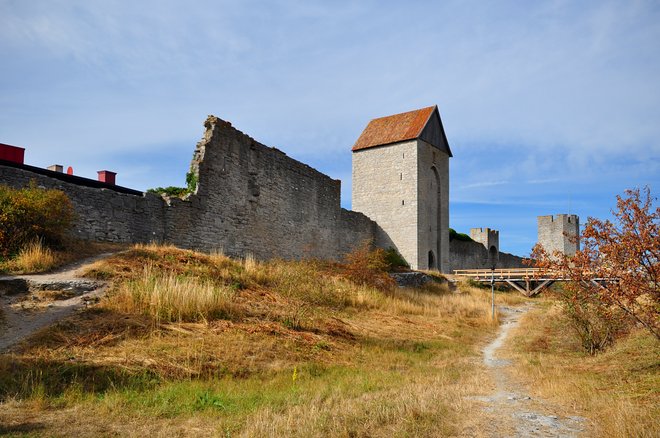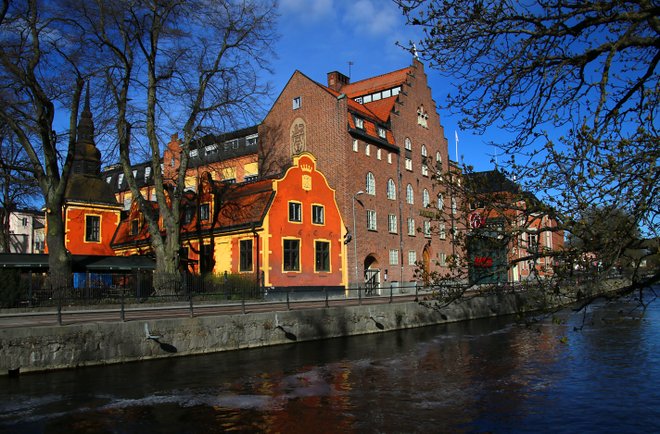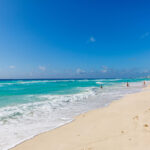Sweden is the largest of the Scandinavian countries (roughly the size of California) and offers a diverse range of travel experiences for any itinerary. The country’s walkable, stylish cities showcase world-class design, intriguing museums, trendy cafes, and a distinctly open-minded atmosphere. With a population hovering just below 10 million, there’s plenty of wilderness to seek out for adventure or solitude. Thousands of islands dot the craggy coastline, while the mainland is dominated by lakes and pine forests until it reaches the northern mountains of Lapland -- a dream destination for seeing the Northern Lights. Below, we’ve assembled a list of six must-see destinations that show a glimpse of everything Sweden has to offer.
1. Stockholm
Sweden’s capital, Stockholm, is the main entry point for most international flights, and thus, is typically the starting place for any visit. Convenience aside, Stockholm is one of Europe’s most cultured capitals, combining historic cobblestone lanes with avant-garde design, haute cuisine, and vibrant nightlife. Stockholm is scenically situated on the waters of Lake Mälaren, ensuring proximity to the waterfront wherever you go. Despite being scattered across 14 islands, Stockholm is easily navigable, thanks to the underground metro as well as extensive bike lanes and pedestrian streets connected by approximately 50 bridges. Water taxis and kayaks are another option for exploring Stockholm’s waterways.
And forget Ikea when it comes to Swedish design — Stockholm produces some of the world’s most cutting-edge design. The best of the best showcase their work at the biannual Stockholm Design Week, which runs during one week in February and August. During Design Week, numerous installations and exhibits of furniture, lighting, art, textiles, and more emerge across Stockholm. Whether or not your visit lines up with Design Week, head to the STHLM Design District, where dozens of leading designers operate their studios and boutiques. On a similar note, the Nordic Museum and Moderna Museet demonstrate the evolution of Swedish design, from the 16th century to the present. Stockholm boasts a slew of other museums that house all types of subject matter, such as the Vasa Museum, which commemorates the unsuccessful maiden voyage of the massive Vasa warship in 1628. Other unique choices include the Nobel Museum, which covers past Nobel laureates, and ABBA: The Museum, an interactive exhibition with the slogan “Walk in. Dance out.”
Stockholm may be Scandinavia’s largest city, but the Swedes prioritize a work/life balance. About 30 percent of the city comprises designated green space, making cross-country skiing and ice-skating in the winter and kayaking in the summer possible from the city center. The Stockholm archipelago is the largest in Sweden, totaling 24,000 rocky islands and islets covered in pines and adorable red cottages. An escape from the city to one of these ruggedly beautiful islands is just a boat trip away.
Hotel Pick:
2. Kungsleden
The Kungsleden (King’s Trail) stretches roughly 280 miles from Abisko to Hemavan through the pristine wilderness of the Swedish Lapland region. The trail is located within the Arctic Circle, in the far northern reaches of Sweden. It’s over 800 miles by car or train to the northern trailhead from Stockholm. A summer visit (June to September) is ideal for hiking, though trail conditions in June can be hindered by the melting snow. In the winter months, the trail turns over to cross-country skiers. Being so far north, the ski season extends into April and early May, which is the best time to visit for extended daylight hours. There isn’t a dull moment on the Kungsleden, as it traverses river valleys, rugged mountains, fields of flowers, and dense pine forests.
The trail also leads past Sweden’s tallest mountain, Kebnekaise, which stands at 6,909 feet. Reaching the glacial-covered top of Kebnekaise is by far the most popular stretch of the trail — a bucket list achievement for many Swedes. Despite the extra traffic, the lodge at the base of the mountain provides the most comfortable facilities, including a sauna and a gourmet restaurant serving local specialties like dried reindeer heart, moose steak, and cloudberries. It’s not uncommon to see both reindeer and moose on the trail. The reindeer population is under the cooperative ownership of the indigenous Sami people, who have traditionally herded the animals for millennia.
The trail is broken up into 29 stages, ranging in distance from five to 15 miles. All of the stops have basic accommodations, while some provide food, bathrooms, and saunas — perfect for aching muscles. Though the Kungsleden mainly navigates remote areas, it does pass near some small towns and roads, allowing the hike to be broken into smaller segments instead of a month-long journey.
3. Malmo
Sweden’s third-largest city, Malmo, lies at the southern edge of the country — just a 36-minute train ride from Denmark. Malmo’s historic center, known as Gamla Staden (Old Town), packs in three public squares. The smallest, called Lilla Torg (little square), has several outdoor cafes and is the best of the three for enjoying the quaint Scandinavian atmosphere. Looking from Gamla Staden across the canal to the west is Malmohus Castle and the adjoining Slottsträdgården (Castle Garden). Malmohus served as the seat of Danish royalty in the 1700s, followed by a stint as a prison. Today, it’s open to the public as a history and art museum.
Like Stockholm, Malmo’s urban landscape blends old and new. The Oresund Bridge stretches over five miles across the strait, between Sweden and Denmark, before plunging through a man-made island to finish the journey by tunnel. Malmo is also home to Scandinavia’s tallest building. To really get a feel for Malmo’s diversity, explore beyond Gamla Staden to Gamla Vaster, Mollan, and Vastra Hamnen. Gamla Vaster is known for its galleries and trendy restaurants, while Mollan is home to an outdoor market, ethnic food, and alternative nightlife. Vastra Hamnen displays Swedish modernism on its waterfront promenade. Malmo’s natives don’t let the long winters stop them from utilizing their cherished waterfront. Locals can be seen swimming at sandy Ribersborgsstranden beach year-round. Tip: Combine a winter plunge with a trip to Kallbadhuset sauna. Those visiting during the summer should consider attending Malmofestivalen, an eight-day festival held in August that includes numerous cultural events.
4. Gothenburg
Sweden’s second-largest city, Gothenburg, has emerged from its working-class identity to offer a more laid-back cosmopolitan atmosphere than bustling Stockholm. Gothenburg still functions as Sweden’s busiest port, which contributes to the multicultural fabric of the city today. Inland, the urban landscape is defined by broad avenues, canals, and neoclassical architecture, leading to public squares and side streets strewn with trendy cafes. The city is home to lots of cultural attractions — namely, museums, historical landmarks, and festivals — many of which are located in and around the historic old town. The Maritiman is “the world’s biggest floating museum of ships,” and can be seen in the Göta River adjacent to the opera house. Other worthwhile stops include the Gothenburg Museum of Art, the Volvo Museum, and the Museum of World Culture. Gothenburg buzzes with festivals and events year-round, so be sure to check the calendar during your visit. Highlights include the February film festival, West Pride in May, and the Christmas market and celebrations at Julstaden.
Hotel Pick:
5. Gotland
Sweden’s largest island, Gotland, is one of the country’s premier beach destinations. The island is located just off the mainland’s southeastern coast in the Baltic Sea, and can be reached by a 30-minute flight or three-hour ferry. Though Scandinavia likely doesn’t come to mind when planning a beach getaway, Gotland attracts Swedes in the summer when it sees over 20 hours of sun daily and reaches temperatures in the 70s. Despite its local popularity, Gotland is often overlooked by foreign travelers for Sweden’s cities or Lapland. Gotland has a mix of stone and sand beaches. One of the finest stretches lies between Sjaustrehammaren and Ljugarn on the east coast, and features golden sand and pine forests.
Gotland isn’t all about the surf and sand, though. The main town on the island, Visby, earned UNESCO status for its remarkable medieval city wall, cathedral, and ruins. The wall maintains its original structure of 36 towers, with the best view coming from the north gate. Visby possesses plenty of charming cafes and shops to keep travelers occupied, but the smaller villages strewn across the island are worth visiting as well. Visitors are welcome to picnic, swim, and pick wild berries on any land that is not specifically marked off. The Swede’s call this freedom to roam “allemansratten,” and it’s protected by constitutional law, so wander freely as long as you clean up after yourself (Swedes are appalled by littering). Public transport on Gotland is limited to a couple of bus routes, but you can reach much of the surrounding countryside by bicycle.
6. Uppsala
Uppsala, the country’s fourth-largest city, is the ultimate Swedish university town, which ensures it maintains a vibrant cultural atmosphere. It’s bisected by the Fyris River, with the historic center to the west and commercial district to the east. The medieval center is considered to be the historic and religious focal point of Sweden. Sweden’s largest cathedral, Uppsala Domkyrka (Uppsala Cathedral), is located here. The massive gothic structure was originally conceived in the 13th century to outshine a rival cathedral in Trondheim, Norway. Other historic landmarks include the Linnéträdgården botanical gardens, Carolina Rediviva library, and Uppsala University with its Renaissance-style architecture. Each year on April 30, Uppsala is consumed by the Valborg festival, which celebrates the arrival of spring in Sweden. The festivities include a parade of imaginative floats on the Fyris River, concerts, the donning of the caps ceremony at the university, and day-long parties in the street. Uppsala is just one hour north of Stockholm, making it a doable day trip or stopover from the Swedish capital.
You’ll Also Like:
- The Ultimate Guide to the Scandinavian Capitals
- Copenhagen vs. Stockholm: Which Scandinavian City Should You Choose?
- Where to Go in the Netherlands Besides Amsterdam
All products are independently selected by our writers and editors. If you buy something through our links, Oyster may earn an affiliate commission.
